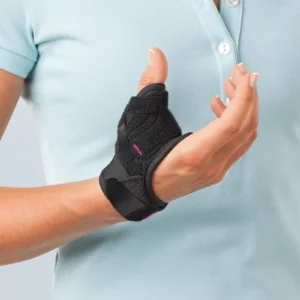Guide to Hand and Wrist Injuries

The hand and wrist form one of the most complex and versatile structures in the human body, essential for a wide range of movements and daily activities. The wrist is the joint that connects the forearm to the hand and is made up of eight small bones, known as carpal bones, in addition to the bones of the forearm (radius and ulna). The hand, in turn, is made up of five metacarpals and fourteen phalanges, allowing for the flexibility and dexterity required for fine, precise movements. This complex network of bones is complemented by muscles, tendons and ligaments that provide movement and stability.
The intricate design of the hand and wrist enables not only basic movements such as grasping and releasing, but also the execution of delicate and precise tasks. Hand and wrist health is crucial, as problems in these areas can significantly affect quality of life, limiting the ability to carry out simple everyday tasks. Maintaining the health of the hand and wrist involves preventing injuries by adopting appropriate techniques during manual activities, as well as carrying out regular exercises to strengthen and increase the flexibility of these areas.
Hand and Wrist Injuries: Common Pathologies
Injuries to the hand and wrist are common, especially due to repetitive movements or overuse in daily and work activities. One of the most common injuries is tendonitis, an inflammation of the tendons that can cause pain and stiffness. Carpal tunnel syndrome, a condition resulting from compression of the median nerve in the wrist, is another frequent injury, characterised by pain, tingling and loss of strength in the hand. Fractures and sprains are also common, particularly in activities involving the risk of falling or direct impact. In addition, conditions such as arthritis can affect the hand and wrist joints, causing pain and limited movement. Prevention of hand and wrist injuries involves avoiding repetitive movements or prolonged use of force, maintaining good posture and performing strengthening and stretching exercises. In the event of injury or persistent discomfort, it is essential to seek medical advice for a correct diagnosis and appropriate treatment.
Learn about the most common hand and wrist injuries - causes, symptoms and treatment.
Products for
all the symptoms
ARTUS is proud to offer a wide range of options for the main pathologies.
Recommended orthoses for your Hand or Wrist
-
Seleccione Opções This product has multiple variants. The options may be chosen on the product page
-
Seleccione Opções This product has multiple variants. The options may be chosen on the product page
-
Seleccione Opções This product has multiple variants. The options may be chosen on the product page
-
Seleccione Opções This product has multiple variants. The options may be chosen on the product page
-
Seleccione Opções This product has multiple variants. The options may be chosen on the product page
-
Seleccione Opções This product has multiple variants. The options may be chosen on the product page
-
Seleccione Opções This product has multiple variants. The options may be chosen on the product page
-
Seleccione Opções This product has multiple variants. The options may be chosen on the product page
-
Seleccione Opções This product has multiple variants. The options may be chosen on the product page
-
Seleccione Opções This product has multiple variants. The options may be chosen on the product page
-
Seleccione Opções This product has multiple variants. The options may be chosen on the product page
-
Seleccione Opções This product has multiple variants. The options may be chosen on the product page
-
Seleccione Opções This product has multiple variants. The options may be chosen on the product page


















